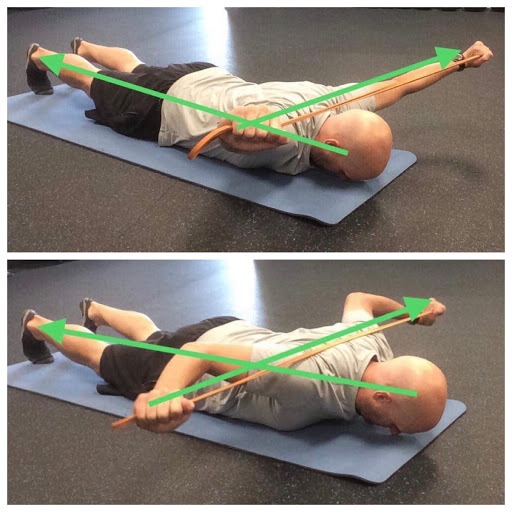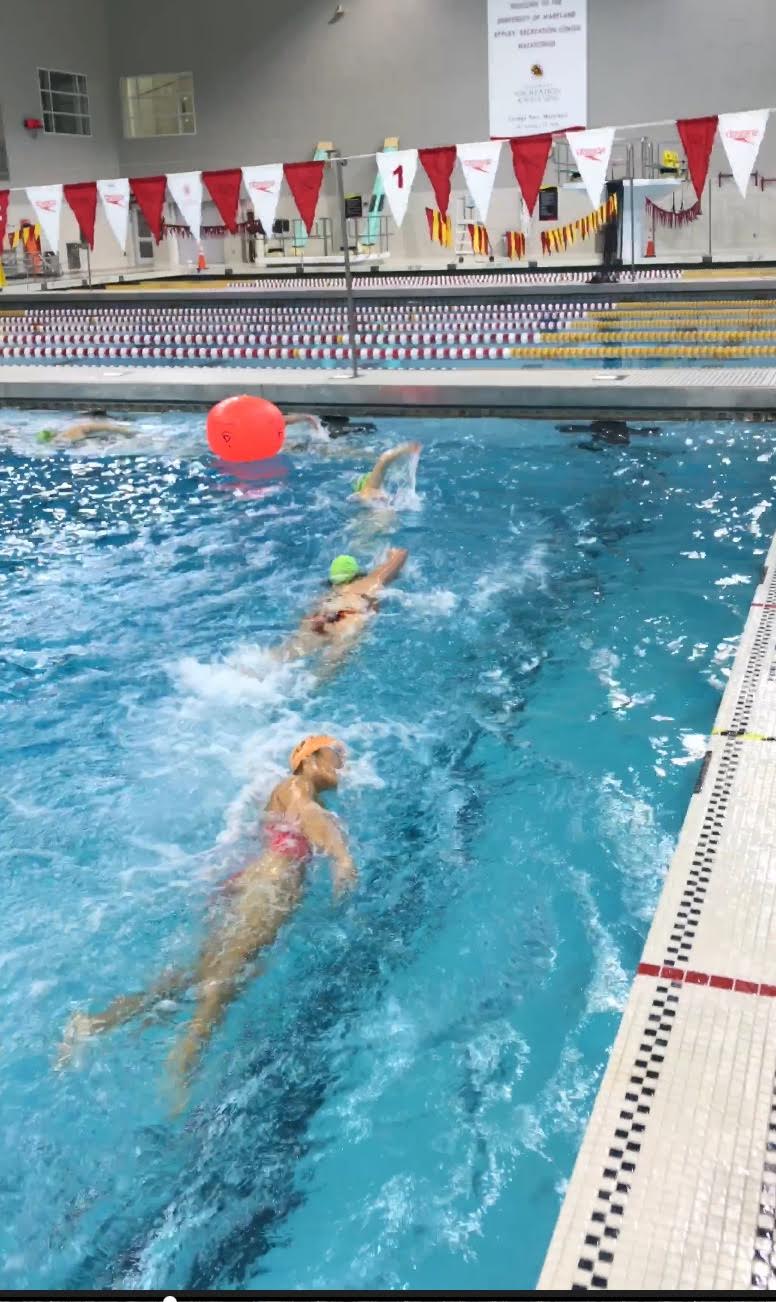Contributed by Stacy Sweetser, ASCA & USMS Level II, SweetWater Swim Studio & Chris Brown, CSCS, CCET, Endurafit Training and Rehab
Welcome back to our progressive dryland training sequence, Swim Strong. Now that you have progressed through Phases I & II, you are ready to introduce the use of resistance bands and add a challenge to the traditional side plank in Phase III. Read Phase I here and Phase II here.
Resistance bands are simple training tools you can take with you anywhere (pack them in your swim bag!). Despite being simple, they are powerful tools that increase load on the muscles, tendons, and ligaments in addition to working range of motion. When using resistance bands, it is important to remember that form is the main priority, not working to failure. Due to the fact that the resistance intensifies as the band stretches, choose a band with a lighter resistance (we use ¼ - ½ inch for our clients). Here is a link to some of our favorites.
The goal of this series is to increase a swimmer’s range of motion while building strength, mobility and athleticism. This fundamental movement pattern work aids in injury prevention, tightens connective tissue, and improves swim mechanics and strength. Dryland training, at the pool and at home, is a valuable addition to any swimmer’s routine regardless of age or fitness level.
Use the following Phase III exercise routine as your dynamic warm up before each swim, at home, or before other activities. Allow 3-5 minutes 3x/week. Feel free to alternate days while revisiting exercises from Phase I and Phase II. On the pool deck, use a kickboard as a cushion for your knees, ankles, and forearms when appropriate.
A dynamic warm up increases blood circulation and fires up muscles soon to be engaged in the water. Think, “RAMP Up!” before you start up. (RAMP = Range of motion, Activation, Muscle Pliability.)
Do not force movements in this routine and build repetitions and time in exercises gradually. Remember, when using resistance bands, focus on form and do not work to failure.
Band Pull Aparts
Why do it? The band pull apart is a great drill to focus on strengthening the upper back and posterior (rear) shoulder. Think of these as the “posture muscles”. These groups are extremely important in allowing for shoulder mobility and helping to maintain a tall, neutral spine.
How to do it well: In a tall kneeling position (both knees on the ground), start by pulling the toes under the shins. Press the hips forward and raise the band to chest height with the palms facing upwards as depicted by the green arrows. Pull the band outward with the elbows remained in a straight (not locked) position. Complete 2-4 sets of 10-15 repetitions. Watch video example here.
Common mistakes: The most common mistakes are starting with the back rounded and the arms raised above the shoulders, extending or arching the back, and shrugging the shoulders during the pulling phase as depicted by the red arrows.
Side Planks with Hip Dip
Why do it? The side plank with hip dip is a great drill to focus on the obliques, outer hip, and shoulders.
How to do it well: Start with the elbow directly under the shoulder and the feet in either a stacked position or heel to toe position with the hips in a neutral position. In a slow, controlled manner, draw the abs in and lift the hips towards the ceiling then return to the floor. Complete 2-4 sets of 8-12 repetitions. Watch video example here.
Common mistakes: The most common mistakes are starting with the hips too high, the elbow not aligned with the shoulder, and the shoulders rounded forward.
Bent Over Band Rows
Why do it? The band bent over rows is a great drill to improve the spine stabilizers and strengthen the upper and mid back.
How to do it well: Standing on the band with the feet hip width apart, slightly bend the knees, stick the butt back, and draw the shoulder blades together creating a strong, neutral spine. Pull the band upwards and imagine bringing the hands towards your pockets with the elbows straight up. Return the arms to a straight position. Complete 2-4 sets of 12-15 repetitions. Watch video example here.
Common mistakes: The most common mistakes are standing with the knees straight, rounding the spine, and allowing the elbows to pull outside.
Superman Band Press
Why do it? The superman band press is a great drill to strengthen the posterior chain, including the paraspinal muscles, lats, posterior deltoid and rhomboids all while improving mobility of the shoulders.
How to do it well: Start by lying face down with the hands towards the end of the band with the palms facing down. Push the toes into the floor and extend the knees while pulling the band slightly higher than the head. Put tension on the band while pulling the band behind the head until the elbows reach the end point. Return the arms to a straight position while keeping tension on the band. Complete 2-4 sets of 8-15 repetitions. Watch video example here.
Common mistakes: The most common mistakes are extending the back and allowing the chest to leave the floor, pulling too much tension on the band, and not bending the elbows as the band comes behind the head.
Learn more about Stacy & Chris:
Stacy Sweetser, ASCA & USMS Level II Coach: SweetWater Swim Studio | Facebook | Instagram
Chris Brown, CSCS, CCET: Endurafit Training and Rehab | Facebook | Instagram



















